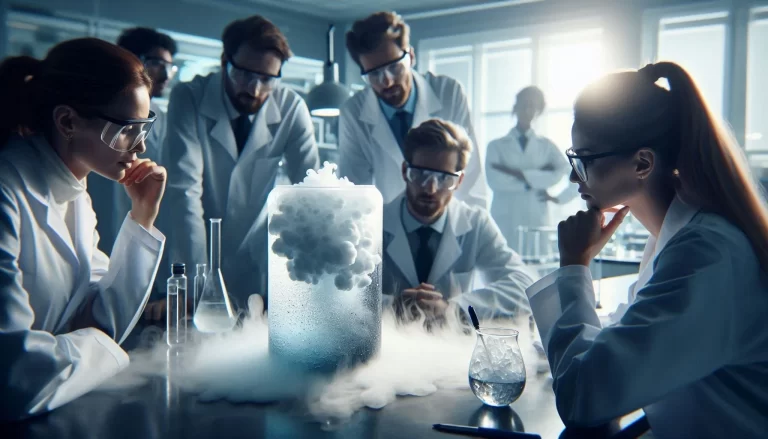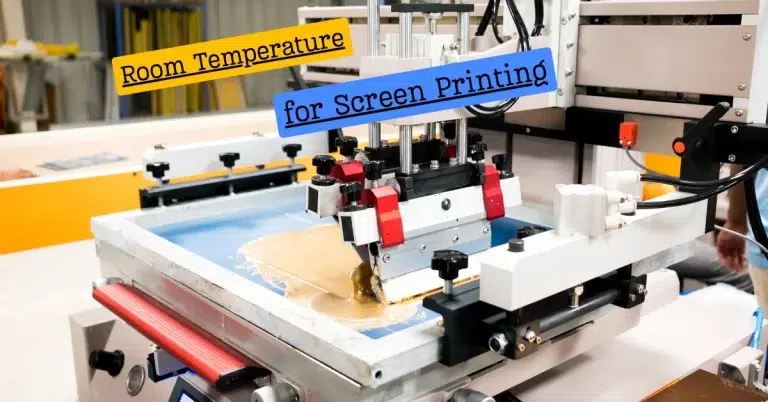Introduction to Sublimation Printing: Start Like a Pro Today
Learn the basics of sublimation printing and start creating professional quality prints with this comprehensive introduction to the process!
Have you ever seen a mug with a photograph that looks like it’s part of the mug itself? Or maybe a t-shirt with a design that seems to blend seamlessly into the fabric? That’s the magic of sublimation!
Sublimation printing is a unique process that creates vibrant, long-lasting designs on a variety of materials. It’s a popular choice for creating custom t-shirts, mugs, phone cases, and more. But how exactly does it work? And is it something you can try at home?
🖨️ What Is Sublimation Printing?
A cutting-edge technique that permanently bonds the ink to materials using heat, creating vibrant and long-lasting designs. The material becomes part of it, unlike traditional printing, because it doesn’t sit on top of it!
- Special Inks: Sublimation inks turn from solid to gas when heated (350-400°F).
- Polymer Bonding: The gas penetrates polyester fabrics or polymer-coated surfaces (ceramics, metals).
- Permanent Fusion: When cooled, the ink solidifies inside the material—no cracking or peeling!
For dark fabrics, use sublimation vinyl as a workaround—it lets you print white under designs!
What Can You Sublimate On? 🎨🔥
A special polymer coating that bonds with ink under heat is working best on these materials. Polyester-coated items are ideal for sublimation, so be sure to check labels closely, and if in doubt, order blanks from trusted suppliers like JDS Industries or Conde Systems.
Here’s a detailed breakdown of what works—and what doesn’t:
✅ Best Materials for Sublimation
- Polyester Fabric (50%+ Blend) – The higher the polyester %, the brighter the print.
- T-shirts, leggings, tote bags (look for “sublimation-ready” labels).
- Best Results: 100% polyester for maximum vibrancy.
- Hard Surfaces with Poly Coating – Must have a polymer layer for ink adhesion.
- Ceramic mugs, plates (pre-coated blanks only).
- Aluminum water bottles, keychains, photo panels.
- Phone cases (polyester-coated, not silicone or TPU).
- Specialty Items
- Sublimation puzzles, coasters, mousepads.
- Neoprene (laptop sleeves, drink coolers).
❌ What Doesn’t Work?
- 100% Cotton/Natural Fibers – Ink sits on top, washes out.
- Dark Fabrics – Sublimation ink is translucent (shows best on white/light colors).
- Non-Coated Surfaces – Glass, raw wood, or metal without a polyester layer won’t hold ink.
💡 Pro Tips for Success
- Test First! Some “sublimation-ready” items vary in quality.
- Use a Heat-Resistant Tape to prevent ghosting on hard surfaces.
- For Cotton Blends (Under 50% Polyester):
- Try sublimation spray (e.g., PolyTrans Ultra) as a workaround.
🌟 Creative Ideas to Try
- Personalized pet bandanas (polyester fabric).
- Custom sneakers (if they have a polyester upper).
- Festive ornaments (coated ceramic or metal).
Guide to Compatible Materials
(Plus Pro Tips for Stunning Results!)
🎯 The Golden Rule of Sublimation
Sublimation works only on materials with a special polymer coating or high polyester content. Under heat (350-400°F), the ink turns to gas and permanently bonds with these coatings.
✅ BEST Materials for Sublimation
1. Polyester Fabric (50-100% Polyester)
- Ideal for: T-shirts, leggings, tote bags, flags
- Pro Tip: For brightest prints, use white or light-colored 100% polyester fabric. Dark fabrics require special techniques (see below).
2. Polymer-Coated Hard Surfaces
- Ceramics: Mugs, plates, tiles (must be “sublimation-blank” coated)
- Metals: Aluminum water bottles, keychains, photo panels
- Plastics: Phone cases, puzzles, mousepads (look for “sublimation-ready” labels)
3. Specialty Items
- Neoprene (laptop sleeves, koozies)
- Acrylic ornaments
- Poly-coated wood (cutting boards, signs)
🚫 Materials That DON’T Work (Without Hacks)
- 100% Cotton/Natural Fibers – Ink washes out (no polymer bond)
- Uncoated Glass/Wood/Metal – Ink won’t adhere
- Dark-Colored Fabrics – Sublimation ink is translucent (shows best on white/light)
🔥 3 Pro Tricks to Expand Your Options
- For Cotton Blends (Under 50% Poly):
- Use sublimation spray (like PolyTrans Ultra) to create a temporary polymer layer.
- Downside: Less durable than true sublimation.
- For Dark Fabrics:
- Print on white sublimation vinyl, then heat-press onto dark garments.
- Testing Unknown Materials:
- Press a small area at 400°F for 30 sec – if the ink stays vibrant, it’s compatible!
💡 Creative Project Ideas
- Home Decor: Coated ceramic tiles, poly-coated wooden signs
- Fashion: Polyester scarves, swimwear, shoes with polyester uppers
- Gifts: Personalized mugs, pet bandanas, Christmas ornaments
⚠️ Critical Warning
Avoid sublimating on:
- Items with rubber/silicone (e.g., some phone cases) – melts under heat
- Cheap “sublimation” blanks – Poor coatings cause faded prints
Where to Buy Reliable Blanks:
Conde Systems (great for beginners)
JDS Industries (pro-grade supplies)
How Does Sublimation Printing Work?
It might seem like a bit of a mystery, but the process itself is actually quite clever! It relies on a special kind of ink and a good dose of heat to create a permanent bond between the design and the chosen material. Here’s a closer look at the steps involved:
- Design Creation: The first step is to create your masterpiece! You’ll use design software like Photoshop or even free online tools to bring your vision to life. Since the image will be flipped during printing, remember to mirror it beforehand.
- Printing onto Transfer Paper: Next, you’ll need a special kind of paper called sublimation paper. This paper is designed to absorb sublimation inks, which are different from regular printer inks. Once your design is ready, print it onto the sublimation paper using a sublimation printer.
- The Heat Press Steps In: Now comes the magic! You’ll use a heat press, which is essentially a giant iron on steroids. The press applies high heat and pressure to the transfer paper and your chosen material (like a t-shirt or mug). This intense heat causes the sublimation ink to transform from a solid into a gas.
- Gaseous Ink Meets Material: The gaseous ink then dyes the material itself, rather than simply sitting on top like regular ink. The high pressure forces the ink deep into the fibers, creating a permanent and vibrant design.
- The Big Reveal: Once the heat press cycle is complete, you carefully remove the transfer paper to reveal your finished product! The design should be crisp, colorful, and practically become one with the material.
Is Sublimation Printing Expensive to Get Started?
A great way to personalize items, but it does require an initial investment. Starting costs can range from 500 to 1,500, but smart choices like budget equipment and bulk supplies can lower expenses. The investment can quickly pay off if you plan to sell products! Here’s a breakdown of costs and ways to save:
Initial Costs
- Sublimation Printer: Specialized printers with sublimation inks are needed (e.g., Epson EcoTank converted models or dedicated models like Sawgrass). Prices range from 200–200–1,000+, depending on size and quality.
- Heat Press: Essential for transferring designs. Small clamshell presses start around 100–100–300, while larger swing-away models can cost $500+.
- Ink & Paper: Sublimation ink is pricier than regular ink (around 50–50–100 per set), and sublimation paper costs 0.20–0.20–0.50 per sheet.
Ways to Save
- Starter Kits: Some brands offer printer + heat press bundles at a discount.
- Used Equipment: Check marketplaces for lightly used printers or presses.
- Small-Scale Start: Begin with a small heat press and printer to test before scaling up.
Ongoing Expenses
- Ink & Paper: Refills add up, but buying in bulk can reduce costs.
- Blanks: Sublimation-ready items (mugs, shirts, phone cases) vary in price—1–1–10+ per piece depending on quality.
Alternative: Printing Services
If you’re not ready to invest, online sublimation services (like Subli Genius Print, Printful or CustomCat) can print your designs for you—great for testing demand before buying equipment.
🔥 Sublimation Starter Kits & Printer Reviews
🛠️ A-sub Sublimation Starter Kit
Price: ~$399-$499
- Includes 8.5″x14″ heat press
- Epson EcoTank printer (converted)
- 50 sheets sublimation paper
- 4-color ink set (100ml bottles)
✔ Best for: Beginners wanting an all-in-one solution with decent print size capacity.
🎨 Sawgrass Virtuoso SG500 Bundle
Price: ~$799-$899
- Sawgrass SG500 printer (industry standard)
- Includes 15oz sublimation mug press
- 50 blank mugs + sample materials
- Design software (CreativeStudio)
✔ Best for: Small businesses needing pro-quality prints with mug specialization.
🖨️ Top Sublimation Printer Picks
🏆 Epson EcoTank ET-2800 (Converted)
Price: $299 + ~$150 conversion kit
Ideal for hobbyists. Low ink costs, but requires manual conversion to sublimation.
💎 Sawgrass Virtuoso VS1200
Price: $1,299 (ready-to-use)
Commercial-grade with vibrant colors. Includes warranty and software.
⚡ HP Smart Tank 7301 (Converted)
Price: $349 + ~$100 conversion
Fast printing speeds. Good for larger projects like fabrics.
💡 Pro Tip: Buy from suppliers that offer pre-converted printers to avoid DIY conversion hassles!
Benefits of Sublimation Printing
Sublimation printing transforms custom designs with standout benefits. Sublimation delivers lasting, colorful, and comfortable designs with a green edge, perfect for your next project. Here’s why it shines:
- Durable: Designs stay vivid and intact, retaining 95% color after a year of washes.
- Vibrant: Offers 30% more color than traditional methods for bold, photo-quality results.
- Versatile: Works on fabrics, mugs, phone cases, and even metals.
- Comfortable: Keeps wearables soft and breathable, never stiff.
- Eco-friendly: Cuts water use by 90% and minimizes waste.

And it’s not just for clothes. Sure, polyester tees and tote bags are the usual suspects, but with the right setup, you can slap your designs on mugs, phone cases, or even aluminum panels.

The global sublimation market hit $8.4 billion in 2023, and it’s no surprise—businesses love the flexibility to customize anything from gym gear to home décor without breaking a sweat.
Then there’s the green angle. Traditional printing can guzzle water—up to 50 gallons per pound of fabric—and churn out chemical runoff. Sublimation sidesteps that mess. The ink turns to gas, bonds with the material, and leaves almost no waste behind.
While the upfront cost for a decent setup might sting (around $1,500-$3,000 for small-scale gear), the long-term savings on resources add up fast.






